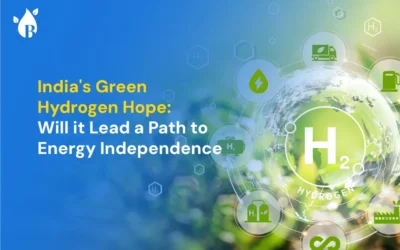
Which is the most abundant chemical element in nature?
Here are a few clues:
- It’s the lightest element in the periodic table.
- The Sun is made up of 70% of this element by mass.
- It fueled cars from the beginning of the 19th century.
Here’s another clue to confirm your guess:
- It’s a component of water which covers 71% of the Earth’s surface.
Hydrogen, It makes up 2/3rd of the elemental mass in the universe. Some like to call it a gift from the Big Bang. However, most of the hydrogen is bound in compounds like water and organic materials. Only a small amount of it is free hydrogen gas.
Hydrogen gas is increasingly gaining popularity as a gaseous biofuel. Green hydrogen is a type of hydrogen fuel produced using renewable sources through electrolysis. It is clean and a sustainable energy source.
Importantly, hydrogen gaseous biofuel is a strong contender to replace fossil fuels in a lot of industries. It is versatile. It has the potential to meet the world’s increasing energy demands.
Making of Green Hydrogen Gaseous Biofuel
Most of the elemental hydrogen is bound in bigger compounds. Eg: water, organic materials, minerals etc. To use it as a gaseous biofuel, hydrogen has to be in its free form. There are a few ways to free hydrogen gas.
1. Electrolysis of Water
Electric currents are passed through water (H2O) to split it into hydrogen and oxygen molecules. This process is powered by electricity from a renewable source. It makes the production of hydrogen gas sustainable and green.
2. Methane Reforming
Methane is mixed with steam and heated at high temperatures. The reaction produces hydrogen gas and carbon monoxide gas. The hydrogen gas is cleared of impurities. The resulting high-purity hydrogen gas is used as fuel in industrial processes and fuel cell vehicles.
3. Biomass Gasification
Biomass is heated in a closed chamber to produce syngas. Syngas is a mix of carbon monoxide, hydrogen, and carbon dioxide gases. Carbon monoxide is further processed to get hydrogen gas.
If the feedstock for biomass is sourced locally, it becomes a sustainable alternative to fossil fuels. This process also leaves behind biochar, an equally valuable byproduct. It improves soil quality.
Potential of Green Hydrogen Gaseous Biofuel
Green hydrogen has the potential to play a significant role in the transition to a sustainable energy system. It has a wide variety of both small-scale and large-scale applications.
Renewable energy sources, such as solar and wind, are intermittent. They rely on the sun shining or the wind blowing. This makes it challenging to balance the supply and demand.
When the demand is met, but supply is available, the excess electricity can be used to split water into oxygen and hydrogen gas. The hydrogen gas can be stored in tanks for later use as a gaseous biofuel.
The stored green hydrogen can be used to generate electricity through fuel cells. The only byproduct of this is water vapour. Fuel cells have high efficiency and are very versatile. They can power homes, buildings, and industries. They can power electric motors that run vehicles. They can be used as backup power in critical infrastructure like hospitals and data centres.
Challenges and Market Trends for Green Hydrogen as a Gaseous Biofuel
Hydrogen gas is versatile, sustainable and emission-free. But it’s still expensive, energy-intensive and has limited infrastructure. This makes producing at large scale a challenge. But growing investments from both private and public sectors is driving technological advancements.
To accelerate development and deployment of green hydrogen gas, governments are providing funding. They’re heavily investing in research, incentives and subsidies. Recently, a ₹19,744 crore incentive plan was approved for green hydrogen manufacturing in India. A hydrogen gas production tax credit program was introduced in the US. Finland set a target to produce at least 10% of the EU’s green hydrogenin 2030.
The need is increasing and the global momentum for green hydrogen as a gaseous biofuel is also expanding. With continued support and investments, cost is set to decline and adoption is set to rise. Green hydrogen represents a promising pathway to energy security and decarbonization.



